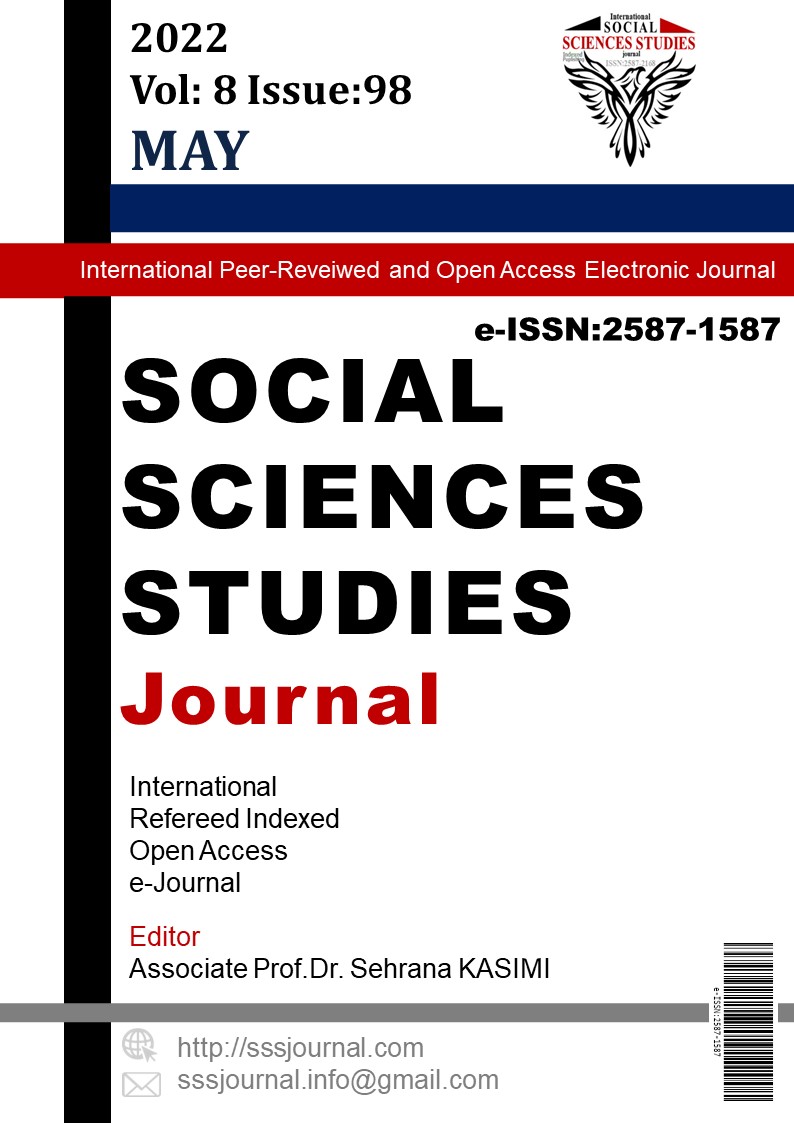Author :
Abstract
“Akıllı Botanik Park Uygulamasının Ortaöğretim Öğrenci Görüşlerine Göre Değerlendirilmesi” adlı çalışmanın amacı, ortaöğretim öğrencilerinin bitki türleri ve faydalarını öğrenmesi hedeflenmiştir.
Akıllı botanik parkın öğrenme üzerindeki etkilerini tespit etmek için odak grup görüşmesi yapılmıştır. Görüşme için 18 yaşında 8 tane 12.sınıf öğrencisi belirlenmiştir. Cevaplarda cinsiyete bağlı yığılmaları engellemek için öğrencilerin 4’ü kız 4’ü erkek olarak seçilmiştir. Belirlediğimiz 8 öğrenci, Akıllı botanik parkta gezdirilmiştir. Öğrenciler bu geziyi telefonlarındaki barkod okuyucularla levhalardaki karekodları okutarak tamamlamıştır.
Akıllı botanik park uygulamasının öğrencilerde bilgilerin kalıcığına, öğrenmenin işlevselliğine ve ders ortamının çekiciliğne etki ettiği anlaşılmaktadır. Bunların yanında öğrencilerin akademik hayatına da olumlu etkilerinin olacağı beklentisi içerisindeyiz.
Okullarda bu tarz öğrenme ortamlarına disiplinlerarası konular dikkate alınarak daha çok yer verilmelidir. Müfredat ve yıllık planlarda açık hava öğrenme ortamlarının daha çok yer tutması, yeni yapılacak okulların, açık hava öğrenme ortamlarına yer verecek şekilde planlanması önerilmektedir.
Keywords
Abstract
The aim of the study called "The Evaluation of the Smart Botanical Park Application According to Secondary School Students' Views" was aimed at secondary school students to learn plant species and their benefits.
A focus group discussion was conducted to determine the effects of the Smart Botanical Park on learning. Eight 12th grade students at the age of 18 were determined for the interview. 4 of the students were chosen as girls and 4 of them as boys in order to avoid gender-related clustering in the answers. The 8 students we determined were taken on a tour in the Smart Botanical Park. The students completed this trip by reading the QR codes on the plates with the barcode readers on their phones.
It is understood that the Smart Botanical Park application affects the permanence of knowledge, the functionality of learning and the attractiveness of the course environment. In addition to these, we expect that it will have positive effects on the academic life of the students.
Such learning environments should be given more space in schools, taking into account interdisciplinary issues. It is recommended that open-air learning environments take up more space in the curriculum and annual plans, and that new schools should be planned to include open-air learning environments.
Keywords
- Baş T.; Çamır, M. & Özmaldar, B. (2008). Nitel Araştırma Yöntemleri, Seçkin Yayıncılık, Ankara.
- Baş T.; Çamır, M. & Özmaldar, B. (2008). Nitel Araştırma Yöntemleri, Seçkin Yayıncılık, Ankara.
- Demir, M. K. (2007). “Sınıf Öğretmeni Adaylarının Gözlem Gezisi Yöntemine Bakış Açılarının İncelenmesi”, Gazi Eğitim Fakültesi Dergisi, 27(3), 83-98.
- Ertaş, H., Şen, A. İ., & Parmaksızoğlu, A. (2011). “Okul Dışı Bilimsel Etkinliklerin 9. Sınıf Öğrencilerinin EnerjiKonusunu Günlük Hayatla İlişkilendirme Düzeyine Etkisi”, Necatibey Eğitim Fakültesi Elektronik Fen ve Matematik Eğitimi Dergisi, 5(2), 178-198.
- Fujimura, N. & Doi, M. (2006). “Collecting Students’ Degree of Comprehension with Mobile Phones”. Paper presented at the 34th Annual ACM SIGUCCS Conference on User Services, 123-127.
- Hepcan, Ç. & Özkan B. (2005). “Botanik Bahçelerinin Kentsel Dış Mekânlar Olarak Kullanıcılara Sunduğu Olanakların Belirlenmesi”, Ege Üniversitesi, Ziraat Fakültesi Dergisi, 42(3), 159-170.
- Karslı, G., Karamustafaoğlu, O. & Kurt, M. (2019). “Botanik Bahçesinin Öğretim Sürecinde ÖğrencilerinSosyobilimsel Konulara Olan Bakışlarına Etkisi: Sürdürülebilir Çevre”, Journal of Computer and Education Research, 7(14), 437-463.DOI: 10.18009/jcer.603489
- Law, C. Y.&So, S. (2010). “QR Codes in Education”, Journal of Educational Technology Development & Exchange, 3(1), 85-100.
- Özçelik, E. & Acarturk, C. (2011). “Reducing The Spatial Distance Between Printed and Online İnformationSoruces Bymeans of Mobile Technology Enhances Learning”, Using 2D barcodes. Computers Education, 57, 2077-2085.
- Rivers, D. J. (2009). “Utilizing The Quick Response (QR) Code Within a Japanese EFL Environment”, Japanese Association of Language Teaching & Computer Assisted Language Learning Journal, 5(2), 15-28.
- Rouillard, J. & Laroussi, M. (2008). “Per Zoovasive: Contextual Pervasive QR Codes as Tool to Provide anAdaptive Learning Support”, Paper presented at the fifth International Conference on Soft Computing as Transdisciplinary Science and Technology, Cergy- Pontoise, France (Konferans sunumu).
- Tatar, N. & Bağrıyanık, K.E. (2012). “Fen ve Teknoloji Dersi Öğretmenlerinin Okul Dışı Eğitime Yönelik Görüşleri”, İlköğretim Online, 11(4), 883-896.
- Willison, J. (1997). “Botanic Gardens as Agents for Social Change”, In Kings Gark and Botanic GardenConservation into The 21st Century: Proceedings of The Fourth İnternational Botanical Gardens Conservation Conaress, 25-29 September.
- Yıldırım, A., & Şimşek, H. (2008). Sosyal Bilimlerde Nitel Araştırma Yöntemleri (6. Baskı). Seçkin Yayıncılık, Ankara.





